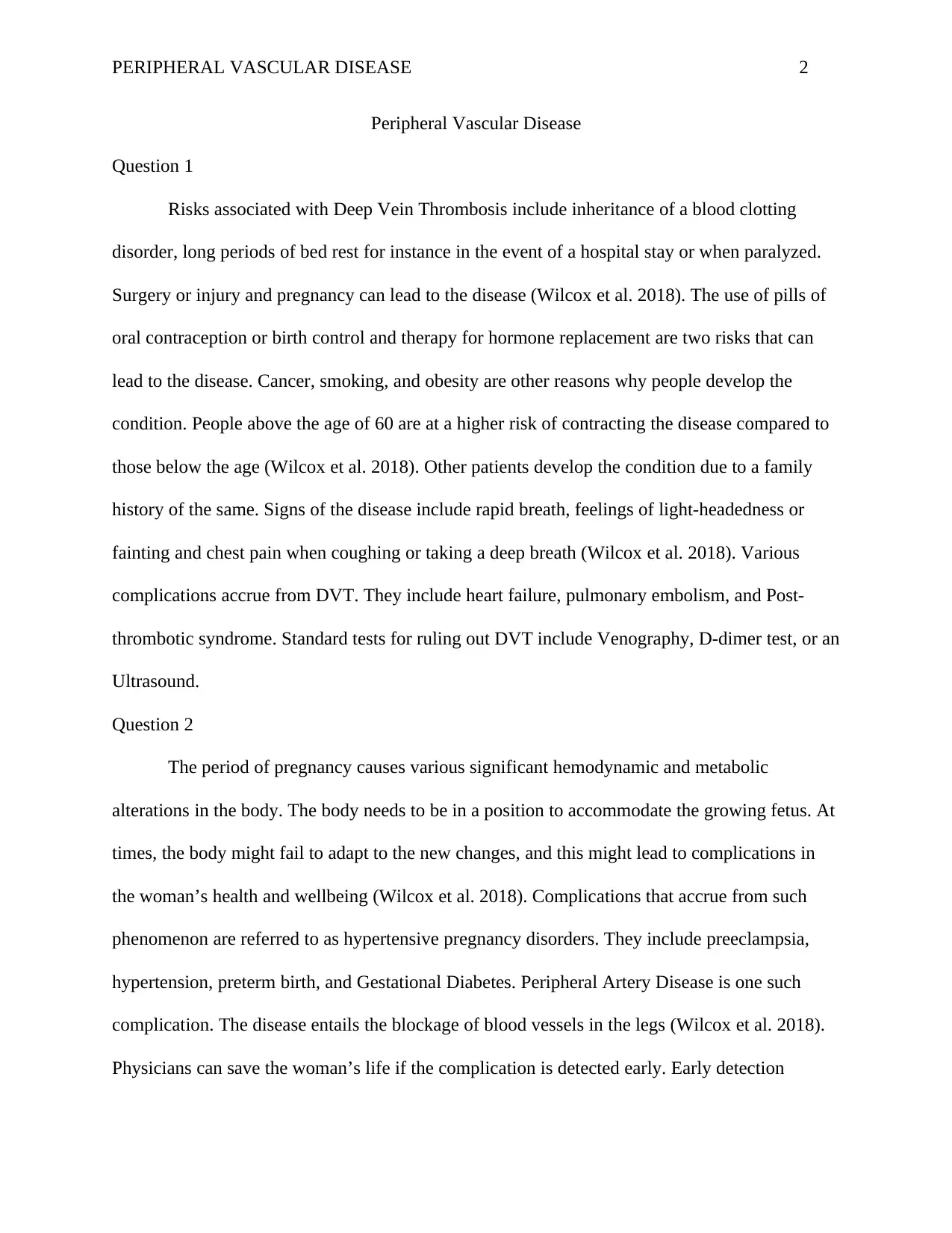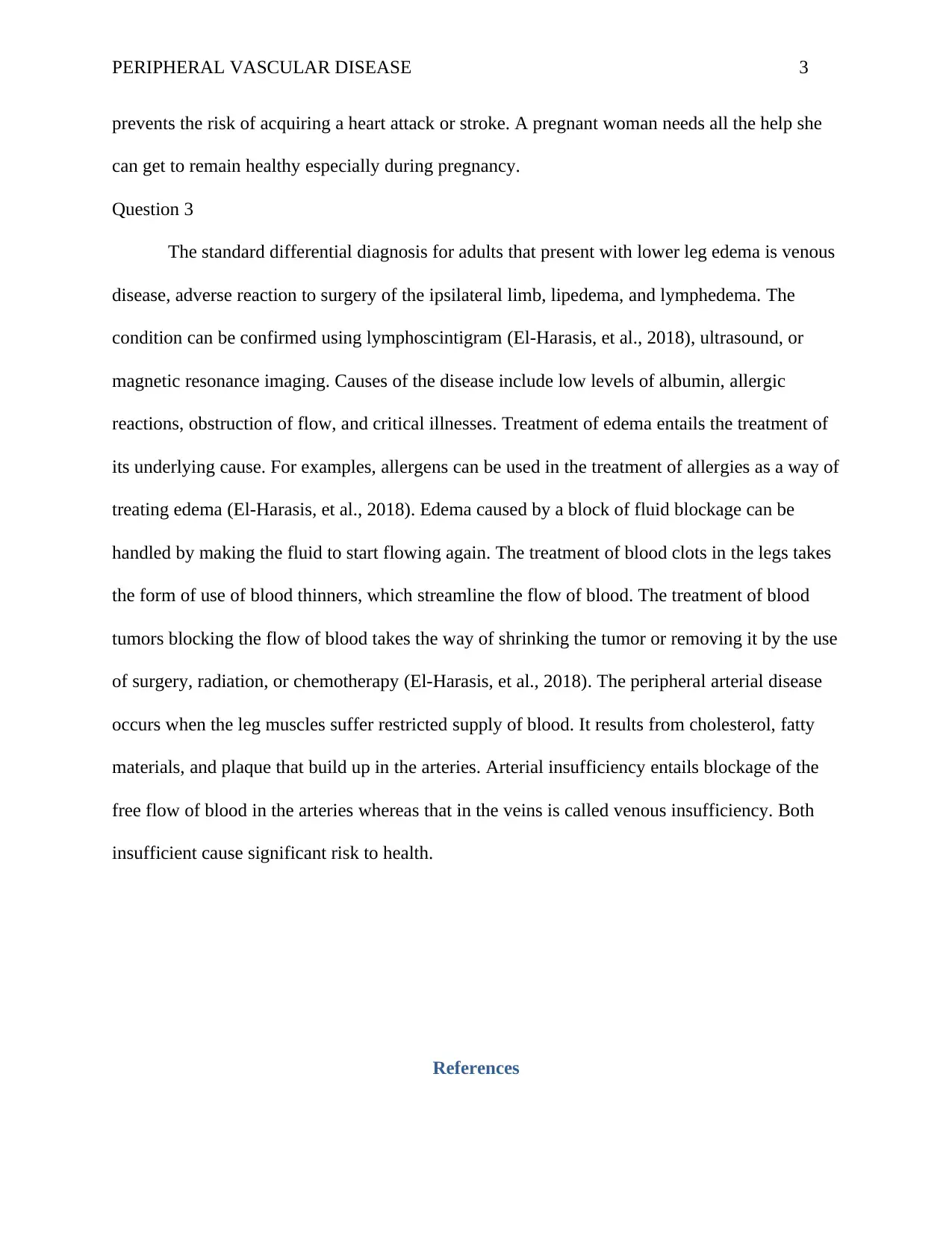Peripheral Vascular Disease: Risks, Diagnosis, and Treatment Analysis
VerifiedAdded on 2021/05/31
|4
|757
|21
Homework Assignment
AI Summary
This assignment delves into the complexities of peripheral vascular disease (PVD). It begins by exploring the risks associated with Deep Vein Thrombosis (DVT), including genetic predispositions, lifestyle factors, and pregnancy-related complications, along with the signs and potential complications of DVT. The assignment then examines the impact of pregnancy on vascular health, highlighting conditions like peripheral artery disease (PAD) and the importance of early detection. Finally, it addresses the differential diagnosis and treatment of lower leg edema, differentiating between venous and arterial insufficiency, and discussing various treatment approaches for underlying causes like allergies, blood clots, and tumors. The assignment incorporates relevant research and provides a comprehensive overview of PVD and related conditions.
1 out of 4











![[object Object]](/_next/static/media/star-bottom.7253800d.svg)